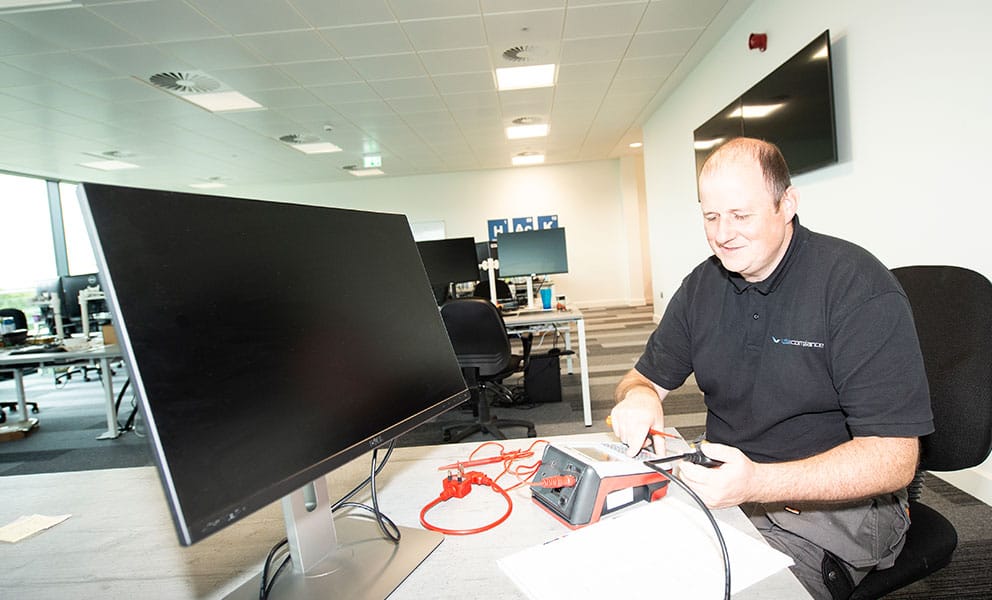
Crucially, they’ll also make sure you’re compliant with the relevant regulations. In this post, we’ll discuss what exactly the regulations require and how to stay on top of your fixed wire and PAT testing.
Short for Portable Appliance Testing, PAT testing refers to the inspection of portable electrical appliances to make sure they’re safe to use. It applies to everything from microwaves, kettles and vending machines to printers, PCs and photocopiers. Basically, anything that needs to be plugged in to work requires a PAT test.
The PAT test itself includes a thorough visual examination followed by a check using PAT testing equipment. This equipment assesses three key aspects of the appliance’s function:
Once the test is complete, the appliance will either be deemed unsafe or safe to use. If it’s unsafe, it will be removed from use immediately. On the other hand, safe appliances will be labelled with an appliance ID, test date and an indication of when the next test is required.
Not a million miles from PAT inspections, fixed wire testing refers to checks on your site’s electrical system – the components which conduct electricity throughout the building. This can include, but is not limited to:
Electrics are inspected in line with the BS 7671 regulations, looking for:
After all fixed wire tests, you’ll receive an Electrical Installation Condition Report (EICR), breaking down any issues into four categories – C1 (danger present), C2 (potentially dangerous), C3 (improvement recommended) and FI (further investigation required).
From the Health and Safety at Work Act (1974) to the Provision and Use of Work Equipment regulations (1998), there are a number of laws which require PAT and Fixed Wire tests to be regularly undertaken at commercial sites.
As a minimum, PAT testing is required every 12 months to stay compliant. However, it’s recommended that this is done twice a year as best practice.
On the other hand, fixed wire testing is required every five years. Again, under some circumstances, this may be needed more frequently. Factories and warehouses, for example, may require a test every one or two years, as their electrics will be exposed to more dust and moisture.
Want to make sure your electrics are fully compliant with the relevant regulations? Volta Compliance is on hand to help throughout Yorkshire.
Our team of experienced electricians can conduct thorough inspections and tests on all appliances and electrical components to make sure your building is both safe and compliant.
For more information, don’t hesitate to contact us on 0113 397 1361.
